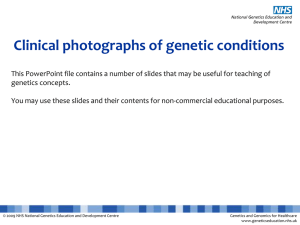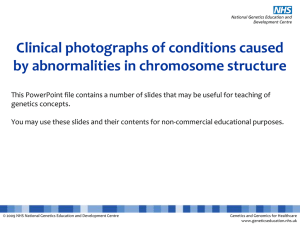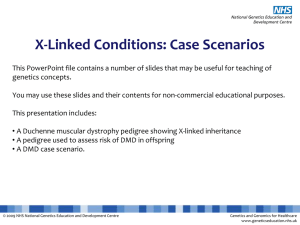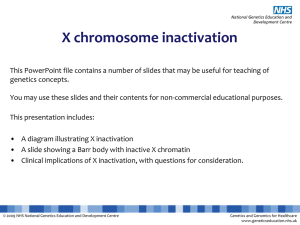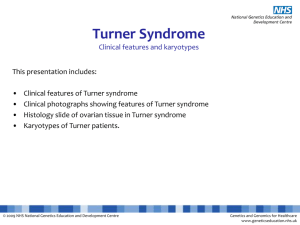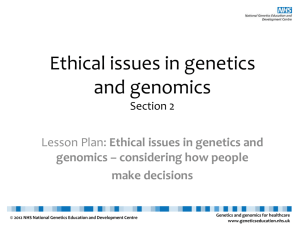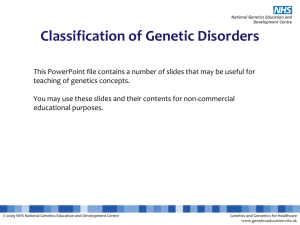Haemoglobinopathies - National Genetics Education Centre
advertisement
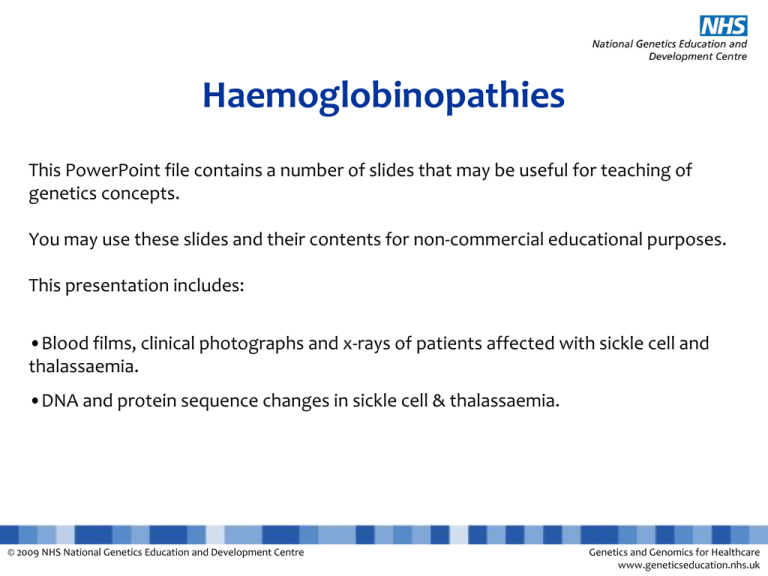
Haemoglobinopathies This PowerPoint file contains a number of slides that may be useful for teaching of genetics concepts. You may use these slides and their contents for non-commercial educational purposes. This presentation includes: •Blood films, clinical photographs and x-rays of patients affected with sickle cell and thalassaemia. •DNA and protein sequence changes in sickle cell & thalassaemia. © 2009 NHS National Genetics Education and Development Centre Genetics and Genomics for Healthcare www.geneticseducation.nhs.uk Sickle cell disease (a) Blood film showing a sickled cell, marked poikilocytosis (abnormally shaped red cells) and a nucleated red cell. (b and c) Bony infarcations in the phalanges and metacarpals can result in unequal finger length. Fig. 4.1 ©Scion Publishing Ltd © 2009 NHS National Genetics Education and Development Centre Genetics and Genomics for Healthcare www.geneticseducation.nhs.uk Effects of thalassaemia (a) Blood film with very marked hypochromia and many nucleated red cells. (b) Osteoporotic appearance of hands due to bone marrow extension. (c) ‘Hair on end’ skull. (d) Liver biopsy with Pert’s stain, showing iron overload. Fig. 5.1 ©Scion Publishing Ltd Photos courtesy of Dr Andrew Will © 2009 NHS National Genetics Education and Development Centre Genetics and Genomics for Healthcare www.geneticseducation.nhs.uk In sickle cell disease an A>T nucleotide substitution causes glutamic acid to be replaced by valine at position 6 of the β-globin protein. Fig. 6.5 ©Scion Publishing Ltd © 2009 NHS National Genetics Education and Development Centre Genetics and Genomics for Healthcare www.geneticseducation.nhs.uk The p.Gln39X mutation in the β-globin gene near the start of exon 2 converts a glutamine codon into a stop codon. Lower case letters represent intron, upper case exon. Fig. 6.6 ©Scion Publishing Ltd © 2009 NHS National Genetics Education and Development Centre Genetics and Genomics for Healthcare www.geneticseducation.nhs.uk
